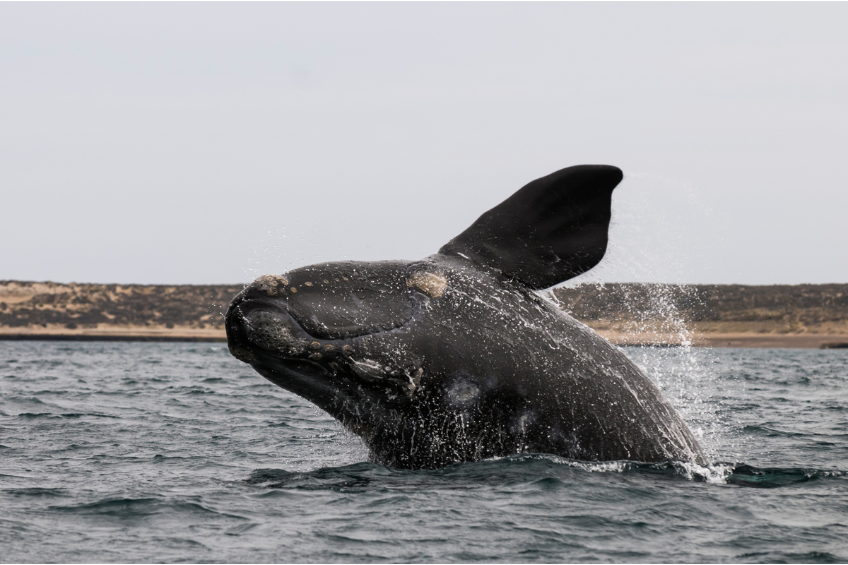
Press coverage of the CFACT, Heartland et al consideration of litigation to protect the Right Whales from offshore wind development brought forth this response from Dominion:
“Dominion Energy spokesperson Jeremy Slayton said in a statement, “These groups lack credibility on environmental issues. They are climate change deniers and oppose offshore wind for political purposes. Dominion Energy is a leader in protecting the environment. We are investing in numerous zero carbon and low carbon technologies for our customers’ benefit.”
Slayton listed protections including NOAA restrictions on pile driving foundation in the water during right whale migration through Virginia waters, bubble curtains to mitigate sound waves from pile driving, and certified Protected Species Observers. The utility also touts collaboration with Duke University and the Regional Wildlife Science Collaborative as it considers mitigation measures.
He said, “For our Coastal Virginia Offshore Wind project, we have taken concrete steps to protect the right whales and their migration path. No underwater construction will occur during the migration season, and the turbines will be spaced about a mile apart to avoid disturbing their path.”“
See https://thevirginiastar.com/2022/10/05/conservative-think-tanks-exploring-litigation-against-coastal-virginia-offshore-wind-project/ for the quoted statement.
Here are some counter arguments to Dominion’s claims, in reverse order since the best is last and the worst is first.
1. The Regional Wildlife Science Collaborative tells us that now is not the time to build any offshore wind in the Atlantic, because we lack the science to assess the impacts on wildlife.
Here is how they put it: “The four RWSC sectors are engaging with scientific experts in several taxa-based Subcommittees to develop an Integrated Science Plan for Wildlife, Habitat, and Offshore Wind Energy in the U.S. Atlantic, or “Science Plan” by mid-2023. The Science Plan will articulate data collection and analysis activities needed for IDENTIFYING, ASSESSING AND AVOIDING IMPACTS to the distribution, abundance, and behavior of wildlife due to offshore wind development. The Science Plan will also provide a roadmap for the four Sectors to fund those activities.” (Emphasis added) See https://rwsc.org/
This lack of impact science is especially true for severely endangered whales. In fact one of the referenced science Subcommittees is for marine mammals.
Their Science Plan is due mid 2023. After that comes funding and finally the desperately needed research.
Duke is gearing up a similar research effort called “Wildlife and Offshore Wind”. Here is their explanation: “Wildlife and Offshore Wind (WOW) is a trans-disciplinary, highly integrated collaboration of diverse experts for the comprehensive evaluation of the potential effects of offshore wind energy development on marine wildlife. Our goal is to provide a long-term, adaptive roadmap for efficient and EFFECTIVE ASSESSMENT OF THE POTENTIAL EFFECTS of offshore wind energy development on marine life, from siting through operation.” (Emphasis added.) See https://offshorewind.env.duke.edu/
Clearly no valid environmental impact assessment (EIA) will be possible until this impact research has been done. Nor can any construction begin until a proper EIA is finalized. So we have years to go and much work to do before any decision can be make on the viability of Atlantic OSW.
2. Re 1 mile spacing. The study I reference in “How to kill whales with offshore wind” says that the excessive noise from a smaller 10MW turbine carries over a mile. Thus the noise from each of Dominion’s huge 15 MW turbines will carry much further and no doubt overlap with multiple other turbines. This will create a veritable wall of noise the whales are almost certain to avoid, pushing them into heavy traffic. Sound travels much further in shallow water.
https://www.cfact.org/2022/09/27/how-to-kill-whales-with-offshore-wind/
3. Re bubble curtains, in my Noise article I cite the federal science site that says pile driving is still “incredibly loud”, so that measure is useless.
https://www.cfact.org/2022/07/26/threat-to-endangered-whales-gets-louder/
4. As for Observers, Dominion’s primary mitigation strategy seems to be watching out for the whales. But the number of sightings is very small compared to the population that migrates thru twice a year so that strategy is ineffective.
5. As for not pile driving during migration, BOEM’s own research shows that whales can be present year round. There is no narrow migration season.
6. As for slandering CFACT et al as “deniers”, as skeptics of OSW they (and I) are able to take the hard look necessary to protect the whales. OSW is an environmentalist cause and to date no environmentalist whale protection group has spoken against OSW‘s obvious threat to the whales. Thus skeptics are the whale’s best hope.
7. In fact Dominion’s assessment of threats to the whales is secret!
https://www.cfact.org/2022/09/15/dominion-hides-osw-threat-to-whales/
One wonders why?
Wind versus whales is a very serious issue, making Dominion’s glib criticism truly silly.
* This article was originally published here
PUBLISH WITH US!
The Washington Gazette works at our discretion with businesses, non-profits, and other organizations. We do not work with socialists, crony capitalists, or disinformation groups. Click the green button below to view our services!
HELP STOP THE SPREAD OF FAKE NEWS!
SHARE our articles and like our Facebook page and follow us on Twitter!





0 Comments